PROGRAMME NOTES
Henri Herz Varaitions on non piu mesta from Rossini's La Cenerentola
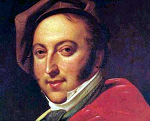
There is nothing new in the phenomenon of the idol of one generation being forgotten by the next. Styles come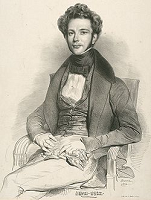 and go: but in his hey-day, the success of Henri Herz knew no bounds. A best-selling composer whose music was heard wherever pianos were played, a sought-after teacher who was appointed professor at the Paris Conservatoire, piano manufacturer, devisor of finger-strengthening contraptions, builder of a fine concert hall named Salle Henri Herz and one of the most popular pianists of the day, Herz even found time to tour America and write a book about his travels. In the New York Tribune of 1846 we see Herz's playing compared to “the most delicate flower-work that the frost-fairies draw upon the window-pane in their frolcsome hours of winter moonlight......His fingering is so precise and rapid, that one would think a bird had escaped from his fingers and went underlating and swinging through the air.” The music of Herz was never profound but possesses a sparkling ebullience so suited to the coloratura finale of La Cenerentola that, as the late great American virtuoso Earl Wild remarked, “Rossini would have been delighted to have written the Herz variations himself.”
and go: but in his hey-day, the success of Henri Herz knew no bounds. A best-selling composer whose music was heard wherever pianos were played, a sought-after teacher who was appointed professor at the Paris Conservatoire, piano manufacturer, devisor of finger-strengthening contraptions, builder of a fine concert hall named Salle Henri Herz and one of the most popular pianists of the day, Herz even found time to tour America and write a book about his travels. In the New York Tribune of 1846 we see Herz's playing compared to “the most delicate flower-work that the frost-fairies draw upon the window-pane in their frolcsome hours of winter moonlight......His fingering is so precise and rapid, that one would think a bird had escaped from his fingers and went underlating and swinging through the air.” The music of Herz was never profound but possesses a sparkling ebullience so suited to the coloratura finale of La Cenerentola that, as the late great American virtuoso Earl Wild remarked, “Rossini would have been delighted to have written the Herz variations himself.”
Beethoven: Piano Concerto No 3 in C minor op. 37
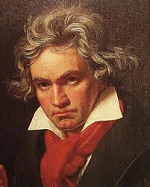 (First movement: Allegro con brio, arranged for solo piano with cadenza by Alkan)
(First movement: Allegro con brio, arranged for solo piano with cadenza by Alkan)
Alkan: Three Pieces from Les Mois (1st Suite) op. 74
- i) Nuite d'Hiver
- ii) Carnaval
- iii) La Retraite
Beethoven’s Third Piano Concerto is often said to date from the year 1800, although the composer’s habit of keeping numerous compositional projects on the boil at once makes it hard to say for sure what was composed when.
Alkan, described by Busoni as one of the five greatest piano composers since Beethoven, shows great skill in differentiating between Beethoven’s original orchestral timbres and combining them with the piano part. The Cadenza, in a succession of audacious musical puns, contains startling references to the finale of an even better-known piece of Beethoven: the Fifth Symphony, which appeared four years after the premier of the Third Concerto.
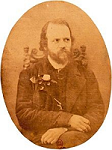
Why Alkan chose to arrange this particular work as a piano solo is not quite clear. Most performers who transcribe do so to provide themselves with effective repertoire or to popularize the work concerned.Yet Alkan was a recluse who seldom played in public and Beethoven’s C minor Concerto was already well-known. It is interesting to note that he received the commission to transcribe the present work and Mozart’s D minor concerto just three years after the appearance (in the Douze Etude Dans les Tons Mineurs op 39) of his own Concerto for Solo Piano.
The cadenza in a succession of audacious musical puns contains startling references to the finale of an even better-known piece: Beethoven's Fifth Symphony, which appeared four years after the premier of the Concerto.
The three short pieces from Alkan's Les Mois show his diversity of style and skill as a miniaturist.
Prokofieff: Sonata No 7 in B flat major
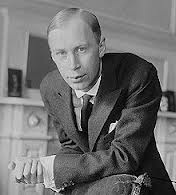 Among the few twentieth-century piano sonatas to have found lasting favour with public, Prokofieff’s Sixth, Seventh and Eighth are popularly known as the “War Sonatas”. During the composition of the Seventh, the German army began its invasion of Russia. Prokofieff, together with other leading Soviet artists, was evacuated from Moscow to Tbilisi, where the work was completed in 1942.
Among the few twentieth-century piano sonatas to have found lasting favour with public, Prokofieff’s Sixth, Seventh and Eighth are popularly known as the “War Sonatas”. During the composition of the Seventh, the German army began its invasion of Russia. Prokofieff, together with other leading Soviet artists, was evacuated from Moscow to Tbilisi, where the work was completed in 1942.
Current events are reflected in a highly personal idiom: the first movement’s eerie lamentations alternate with Prokofieff’s notorious “machine rhythms”, here cast in six-eight time like a macabre jig; the bitter-sweet slow movement has been likened to a tender cameo of a warrior between battles; the triumphant, toccata-like finale, by now almost regarded as virtuoso display piece in its own right, was described by famed Chicago critic Felix Borowski (who was born at Burton-on-Trent) as representing “the heroic inflexibility of a people who are not to know defeat”. Prokofieff put it more simply: “The finale is in seven-eight”.
INTERVAL
Ravel: Sonatine
Ravel’s Sonatine is thought to have been composed between 1903 and 1905, in which year it received its Paris premier at the hands of Gabriel Grovlez. As in his later Le Tombeau de Couperin, exotic impressionism is tempered with neo-classical concision, and as in Alkan’s similarly-named piece, the intricacy is belied by its title, which pays tribute to that earlier époque that was to prove a rich vein of inspiration for both composers.
Franz Liszt: Liebestraum
Liszt's three Nocturnes originated as settings of German love poems for tenor and piano. His transcription of the third of these has become one of the most popular solos in the piano repertoire.
Hexmeron: Variations on the March from Bellini's I Puritani by Thalberg, Liszt, Pixis, Herz, Czerny and Chopin with Introduction, Interludes and Finale by Liszt
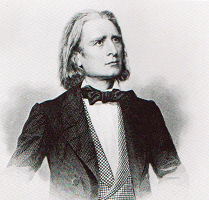 One of the most colourful behind-the-scenes figures in the history of piano music was Princess Cristina Belgioioso (or Maria Cristina Beatrice Teresa Matilde Camilla Julia Margherita Laura Barbiano, Principessa de Belgioioso d'este, to give her her full name). It was in order to raise money for Italian refugees that she invited six of Europe's leading pianists to compose a variation apiece on a rousing Bellini aria. Seated at six pianos the pianists would perform their variations one by one. Since the snuff of gunsmoke and the tang of rivalry wasn't far away (this was pianism's “High Noon” era) each virtuoso so as not to be outdone would write a spectacular set-piece parading his own speciality - Thalberg his stunt of making two hands sound like three, Herz his "rapid and precise" finger technique but maybe not the escaped bird (see above), Chopin his ravishing cantabile tone…and so on. Closest in spirit to Bellini's fine opera, Franz Liszt's variation charts an operatic, Italianate course between the declamatory, the rhetorical and the elegiac.
One of the most colourful behind-the-scenes figures in the history of piano music was Princess Cristina Belgioioso (or Maria Cristina Beatrice Teresa Matilde Camilla Julia Margherita Laura Barbiano, Principessa de Belgioioso d'este, to give her her full name). It was in order to raise money for Italian refugees that she invited six of Europe's leading pianists to compose a variation apiece on a rousing Bellini aria. Seated at six pianos the pianists would perform their variations one by one. Since the snuff of gunsmoke and the tang of rivalry wasn't far away (this was pianism's “High Noon” era) each virtuoso so as not to be outdone would write a spectacular set-piece parading his own speciality - Thalberg his stunt of making two hands sound like three, Herz his "rapid and precise" finger technique but maybe not the escaped bird (see above), Chopin his ravishing cantabile tone…and so on. Closest in spirit to Bellini's fine opera, Franz Liszt's variation charts an operatic, Italianate course between the declamatory, the rhetorical and the elegiac.
Not content with this, Liszt also provided a majestic introduction, transcibed the main theme and composed a dazzling finale complete with giddying back-references to his fellow contributors.
Then he took it on his travels with him. He performed Hexameron everywhere, from the wilds of Russia and Turkey to our own fair land.